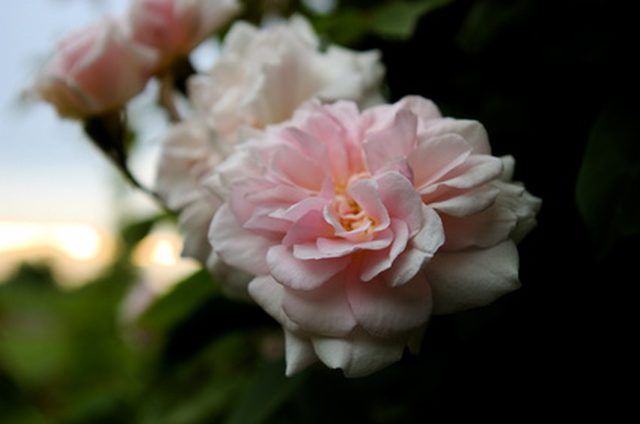Bulbs
Flower Basics
Flower Beds & Specialty Gardens
Flower Garden
Garden Furniture
Garden Gnomes
Garden Seeds
Garden Sheds
Garden Statues
Garden Tools & Supplies
Gardening Basics
Green & Organic
Groundcovers & Vines
Growing Annuals
Growing Basil
Growing Beans
Growing Berries
Growing Blueberries
Growing Cactus
Growing Corn
Growing Cotton
Growing Edibles
Growing Flowers
Growing Garlic
Growing Grapes
Growing Grass
Growing Herbs
Growing Jasmine
Growing Mint
Growing Mushrooms
Orchids
Growing Peanuts
Growing Perennials
Growing Plants
Growing Rosemary
Growing Roses
Growing Strawberries
Growing Sunflowers
Growing Thyme
Growing Tomatoes
Growing Tulips
Growing Vegetables
Herb Basics
Herb Garden
Indoor Growing
Landscaping Basics
Landscaping Patios
Landscaping Plants
Landscaping Shrubs
Landscaping Trees
Landscaping Walks & Pathways
Lawn Basics
Lawn Maintenance
Lawn Mowers
Lawn Ornaments
Lawn Planting
Lawn Tools
Outdoor Growing
Overall Landscape Planning
Pests, Weeds & Problems
Plant Basics
Rock Garden
Rose Garden
Shrubs
Soil
Specialty Gardens
Trees
Vegetable Garden
Yard Maintenance
Facts About the Queen Elizabeth Climbing Rose
Facts About the Queen Elizabeth Climbing Rose. Queen Elizabeth climbing roses have 3- to 4-inch blooms, and they bloom in clusters. Their outer petals are ruffled, and they are symmetrical. The Queen Elizabeth climbing rose produces pink, fragrant blooms all summer. The Queen Elizabeth roses have few to no thorns, making them a popular cut flower.

Queen Elizabeth climbing roses have 3- to 4-inch blooms, and they bloom in clusters. Their outer petals are ruffled, and they are symmetrical. The Queen Elizabeth climbing rose produces pink, fragrant blooms all summer. The Queen Elizabeth roses have few to no thorns, making them a popular cut flower.
Popular
Queen Elizabeth climbing roses are one of the 10 most popular roses planted in the past 40 years. Queen Elizabeth climbing roses are award-winning for their beauty and grace. The Queen Elizabeth climbing rose is also disease resistant. This rose has achieved many rewards, including the National Rose Society President’s International Trophy in 1955, the American Rose Society Gold Medal in 1957, and the World’s Favorite Rose in 1979, among many others, according to growquest.com.
About
Queen Elizabeth climbing roses are a grandiflora, or Modern Cluster Flowered rose, and it grows multiple roses on a single stem. They are similar to the tea rose and are a great option for cut-flower arrangements. Although the climbing Queen Elizabeth is similar to the shrub, it does not flower like the shrub. In fact, it does not flower well at all, according to rose-gardening-made-easy.com. These climbing roses can grow 8 to 10 feet. The Queen Elizabeth rose was hybridized by Walter Lammerts in the United States in 1954, according to growquest.com.
Pruning
The Queen Elizabeth climbing rose is a vigorous grower. It grows tall and will need a little pruning if it is to be grown in a shrub shape. On the vine, pruning will be necessary to maintain the growth and beauty. The Queen Elizabeth climbing rose can be cut down almost completely once every six years in mid-winter. This hard pruning allows the Queen Elizabeth climbing rose to rejuvenate and come back strong. Each year, however, the least productive canes should be removed in mid-winter. Prune them as close to the stem or base as possible, up to 1 foot. Cut just above a bud at a slight angle when pruning.
Landscaping
Queen Elizabeth climbing roses often are used as a focal point in a garden. They have a mild fragrance and are parented by the Charlotte Armstrong and Floradora, creating the characteristics of the beautiful plant. They can be planted alone or in the center of many other plants and flowers. Choosing flowers that are pink, blue or white can create a dramatic garden area. The deep green foliage of the Queen Elizabeth climbing rose is a stark contrast against its dusty pink blossoms, so choosing plants to complement the climbing rose is simple.
Planting Specifications
Queen Elizabeth climbing roses require well-drained soil. They can grow in USDA hardiness zones 4 through 9, reaching a minimum temperature of minus-30 degrees Fahrenheit. They prefer full sun and should be supported on a trellis, wall, fence, arbor or other system where they can vine. The Queen Elizabeth climbing rose is hardy and can adapt to many soil types and lighting. The climbing roses can be used to frame a house, create a privacy fence or in many other ways.